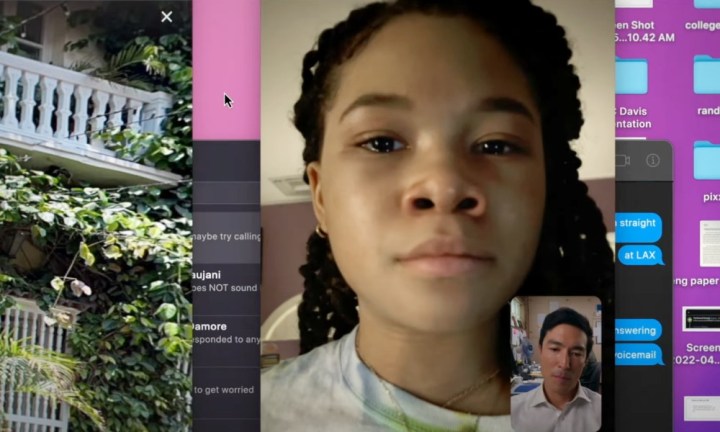John Cho starred in the tense 2018 thriller Searching, which told a story about a father desperate to find his missing daughter. It became a sleeper critical and commercial hit and was praised for its unique way of telling the entire story through a computer screen.
Five years later, Sony just released a follow-up of sorts called Missing. While set in the same world, Missing tells a new story about a teenage girl, June, who quickly realizes her mother has disappeared. Digital Trends talked with the film’s editors, Austin Keeling and Arielle Zakowski, about the unique challenges in putting together a screenlife film in the age of TikTok, how they created tension by using classic cinematic techniques, and whether or not they’d be up for helming a third installment in the Searching Cinematic Universe.
Digital Trends: What editing equipment did you use on Missing?
Arielle Zakowski: This film was made from top to bottom with almost everything Adobe has to offer. We edited primarily in Adobe Premiere Pro. First, we worked on the previsualization of the entire film for about six months before shooting began. All of that was done in Premiere, where we grabbed screenshots of various apps and [various images] to storyboard out the film.

Once shooting began, we started using Premiere Productions, which allowed us to access the footage and share different editing sequences between us. And the final stage of our editing process was done through After Effects. We sent our Premiere timeline over into After Effects, and it was there that all of our temp graphics were replaced with Illustrator files, which allowed us to basically have crystal clear graphics no matter how much we zoomed in on things and to have kind of total control over it all. The final cut of the film was pretty much just rendered straight out of After Effects, which is pretty unusual for a feature film like this.
Missing’s narrative is told primarily through technological devices, like a computer, a phone, and even a Ring camera. What was your work process in working with all these different types of footage to make a coherent narrative?
Austin Keeling: The mixed media narrative was something that neither of us had much practice in. But once we started slotting in all of the footage, it was really easy to just use the language of the desktop to determine how we were going to cover each of those little bits of footage. So the way where we’re looking at FaceTime, mobile phone footage, and Ring videos is going to be different. For example, the online news footage that June tracks throughout Missing, I think we had like nine cameras covering that. There were a lot of cameras being used.
Zakowski: A lot of times we actually ended up making some footage look worse, like adding compression and glitching, to give it a little bit more of a realistic feel on the back end. As editors, we were pretty focused on the story and kept asking ourselves, “How is this scene working? What can we do to improve it?” And the tools we were using kind of became second nature. We wanted to make sure everything felt motivated and true to the character in the story.

Missing is one of the most suspenseful films I’ve seen in a while. How did you maintain that level of tension throughout the entire movie, even though the viewpoint is relatively fixed?
Keeling: The idea of a screenlife film is not necessarily a new or unique thing. We’ve seen it before in multiple movies, but what’s so great about Missing is that we treat the screen very cinematically, like a camera slowly panning across the screen to reveal something important to the plot. We wanted to find those things and milk those moments to really build suspense out of the language of the screen and do it in a cinematic way as much as possible.
Zakowski: A part of what helps Missing’s suspense is the contrast of those slower moments when we’ve been going really fast. At key moments in the film, we suddenly slow down because there is suddenly someone at the door or June is about to find something spooky in her email. You hold your breath and freeze a little bit because it stands out so drastically from the high energy seen earlier in the film when June is frantically trying to search for her mother.
The directors of Missing, Nicolas D. Johnson and Will Merrick, were the editors of Searching. Does this mean that you both will direct the next installment in the Searching Cinematic Universe? And if so, what would you want it to be?
Keeling: [laughs] We have no idea. We joke about it, obviously, but we’ll see what happens.
Zakowski: The first film was a huge success, so we’re excited to see what happens with this one. With Missing, the directors really tried to create a whole new story that pushed the boundaries in every possible way, both technically and storywise. After watching Searching, we tried to turn it on its head a little bit. I don’t know what we’d do with another sequel.
Keeling: It’s interesting because so much time has passed between Searching and Missing. There’s all this new technology and social behaviors to play with. Who knows what new apps there will be in the next few years? If a third movie is made, it will be as different from Missing as Missing is from Searching.
Missing is currently playing in theaters nationwide.



